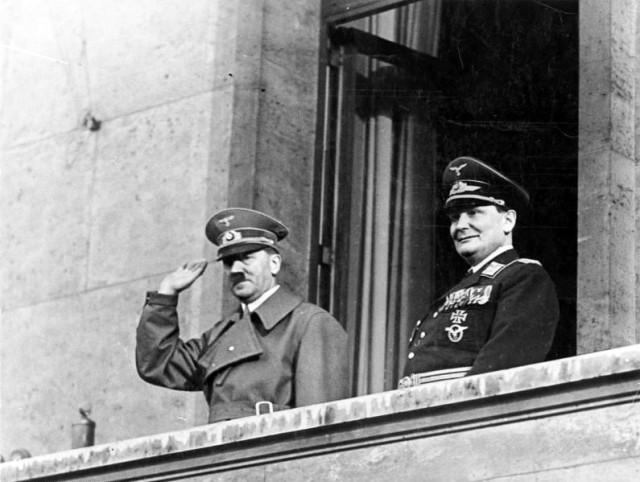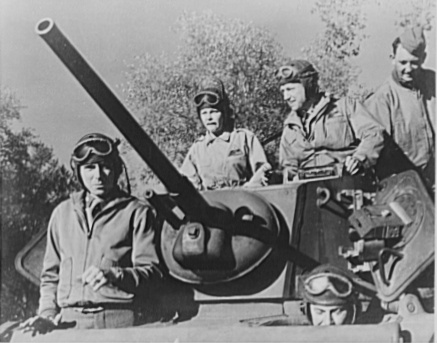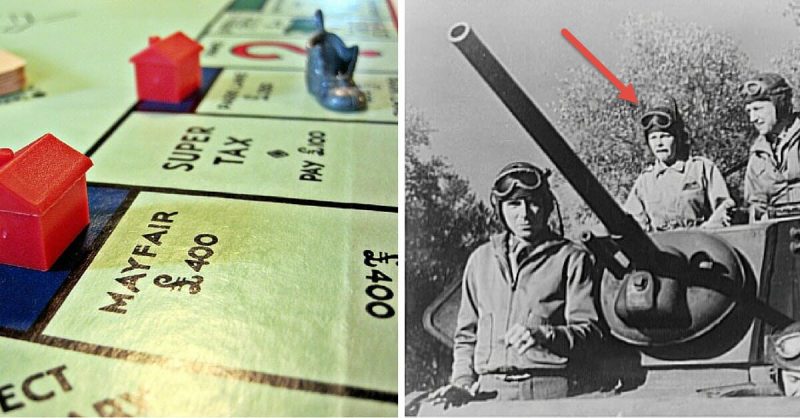Legends, stories, and anecdotes are woven through the quilt of veteran and civilian experiences of war. We gain new words from war slang, and the same stories are told from war to war with tiny adjustments to make them fresh and current.
These stories are even more interesting when they turn out to be true, like the four listed below.
Monopoly Gives POWs a Get out of Jail Free Card
During WWII, Germany allowed aid agencies, such as the Red Cross, to deliver care packages to prisoners of war in Germany. Those packages were allowed to contain recreational items.
British intelligence officer, Christopher Clayton Hutton, had a brilliant idea: concealing items in a board game that would help the POWs get home should they be able to escape.
Waddington’s, a British partner of Parker Bros, was at the time manufacturing Monopoly board games. They were also well known in Britain for their ability with detailed printing on silk. A secret area was set up for quieted employees to make special board games for the POWs. They made shallow indentions under the top graphic paper on which you play and underneath they hid files, a compass, and a map.
Paper maps were unreliable because they were easily damaged and the rustling and crinkling of the paper could be heard, so they made the Monopoly maps out of carefully folded silk. The maps showed routes from the POW camp to safety. These sets even included real currency hidden in the stack of Monopoly money!

Aid workers knew which camps to send the boards to by seemingly innocuous periods after a certain place name on the board. British pilots, before leaving for war, were told that the special sets could be identified by a red dot on the Free Parking space.
Representatives of Waddingtons point out that the sets were smuggled in by fictitious aid agencies because if a set were discovered by Germans for what it really was, they did not want the Red Cross involved. That might have led to the real agency being unable to deliver needed items to the POWs.
The John Waddington Company made other maps and escape aids for the British government during the war. Other games were used to conceal aids to POWs like decks of cards and Snakes and Ladders. Pencils even held very tightly packed maps. Some silk maps were inserted into jackets or the heels of RAF pilots’ boots. It is unknown exactly how many POWs used the maps and escape aids to reach safety, but the estimate is that 10,000 out of 35,000 former POWs who made it back to safety before the end of the war used these aids.
Nazi Hermann Goering says that All a Leader Has To Do is . . .

While facing trial in Nuremberg for war crimes, crimes against peace, and crimes against humanity, Hermann Goering was interviewed by Gustave Gilbert, a prison psychologist and intelligence officer who spoke German.
Gilbert kept a journal that was later published. Called the Nuremberg Diary, it consists of notes and quotes written down immediately after conversations with prisoners and also of essays written by the prisoners themselves.
The conversation with Goering revolved around Goering’s need to try to absolve himself of what he had reportedly done. He pleaded with Gilbert that he was not anti-Semitic, and that had he known in time he would have tried to stop the events of the Holocaust. He said that he did not glorify Hitler and that any remarks he made about killing Jews were temperamental and that there was too much focus on those statements.
When the conversation turned to how the people felt about these atrocities, Gilbert put forth that he didn’t think common people were “thankful for leaders who bring them war and destruction.”
Goering responded “Why, of course, the people don’t want war,” Goering shrugged. “Why would some poor slob on a farm want to risk his life in a war when the best that he can get out of it is to come back to his farm in one piece. Naturally, the common people don’t want war; neither in Russia nor in England nor in America, nor for that matter in Germany. That is understood. But, after all, it is the leaders of the country who determine the policy and it is always a simple matter to drag the people along, whether it is a democracy or a fascist dictatorship or a Parliament or a Communist dictatorship . . . Voice or no voice, the people can always be brought to the bidding of the leaders. That is easy. All you have to do is tell them they are being attacked and denounce the pacifists for lack of patriotism and exposing the country to danger. It works the same way in any country.”
Comedian Martha Raye Earned High Ranks and was Awarded Presidential Medal of Freedom. She was Buried with Full Military Honors at Ft. Bragg

Martha Raye was a Vaudeville born actress, comedian, and movie star that was known for bold comedy. She was named “The Big Mouth”, not only because of her comedy but also for the physical trait.
Beginning in WWII, Raye started a lifelong commitment to entertaining and assisting the troops overseas. She worked with them during WWII, Korea, and Vietnam. Some nights she would do shows, but other nights, she’d skip the show because she’d been assisting the soldiers all day and wanted to continue into the night. A former nurse, she worked with Medivac units and in field hospitals. She often served in remote areas with Special Forces.
Raye wore fatigues and the troops called her “Colonel Maggie.”
Raye was an honorary Colonel in the Marines, and President Lyndon B. Johnson made her an honorary Lieutenant Colonel in the Special Forces as well. The Green Berets have a special place in their hearts for her.
In 1993, President Bill Clinton awarded her the Presidential Medal of Freedom. The text included reads:
A talented performer whose career spans the better part of a century, Martha Raye has delighted audiences and uplifted spirits around the globe. She brought her tremendous comedic and musical skills to her work in film, stage, and television, helping to shape American entertainment. The great courage, kindness, and patriotism she showed in her many tours during World War II, the Korean Conflict, and the Vietnam Conflict earned her the nickname ‘Colonel Maggie.’ The American people honor Martha Raye, a woman who has tirelessly used her gifts to benefit the lives of her fellow Americans.
Raye was offered a place at Arlington National Cemetery upon her death, which is a high honor, but Raye wanted to be with her beloved Green Berets. A very special exception was made for her and she was buried at Ft. Bragg, home of the Green Berets, with full military honors. She is the only civilian buried on post who receives full recognition of military honors on Veteran’s Day.
Hitler Claimed that a Highly Decorated, Victoria Cross Winning British Soldier Spared His Life in WWI
Most of the iterations of this story pose the whole thing as true. Fortunately for an esteemed soldier, it is only partly true – the part where Hitler claims it happened.
It was well known that Henry Tandey was the most highly decorated British private in WWI, and stories of his bravery and compassion were public knowledge. Hitler may have wanted to cast doubt on such a highly regarded hero of war.
The story goes like this:
In 1938, Neville Chamberlain is visiting Hitler in a pre-war diplomatic capacity. As he’s strolling the halls and rooms of the Berghof, he notices a painting of a WWI war scene in which a British soldier is carrying another wounded soldier.
Hitler sidles up and says “That man came so near to killing me that I thought I should never see Germany again; providence saved me from such devilishly accurate fire as those English boys were aiming at us.” He intimated that he actually recognized the man in the painting as Tandey.
The figure in the painting carrying the wounded soldier is said to be, as was believed by Hitler, Tandey. It may well have been. However, some historians believe that Hitler was lying about having met him. For one, Hitler thought the painting’s scene took place in 1918, but it actually shows an incident from 1914. One painted from a sketch that the artist took from a third party.
Further holes in Hitler’s story come from the fact that on the date he claims for his story, his and Tandey’s units were 50 miles apart, and Hitler was on leave at the time anyway.
Historians speculate that Hitler may have seized on the known date that Tandey was reported to have spared other soldiers and that he may have made up this story to further the notion that God spared him for greater things.
Sadly, while Tandey at first was unsure of Hitler’s story and said he would need more information to remember it, he later worried that he might have actually let him go.
